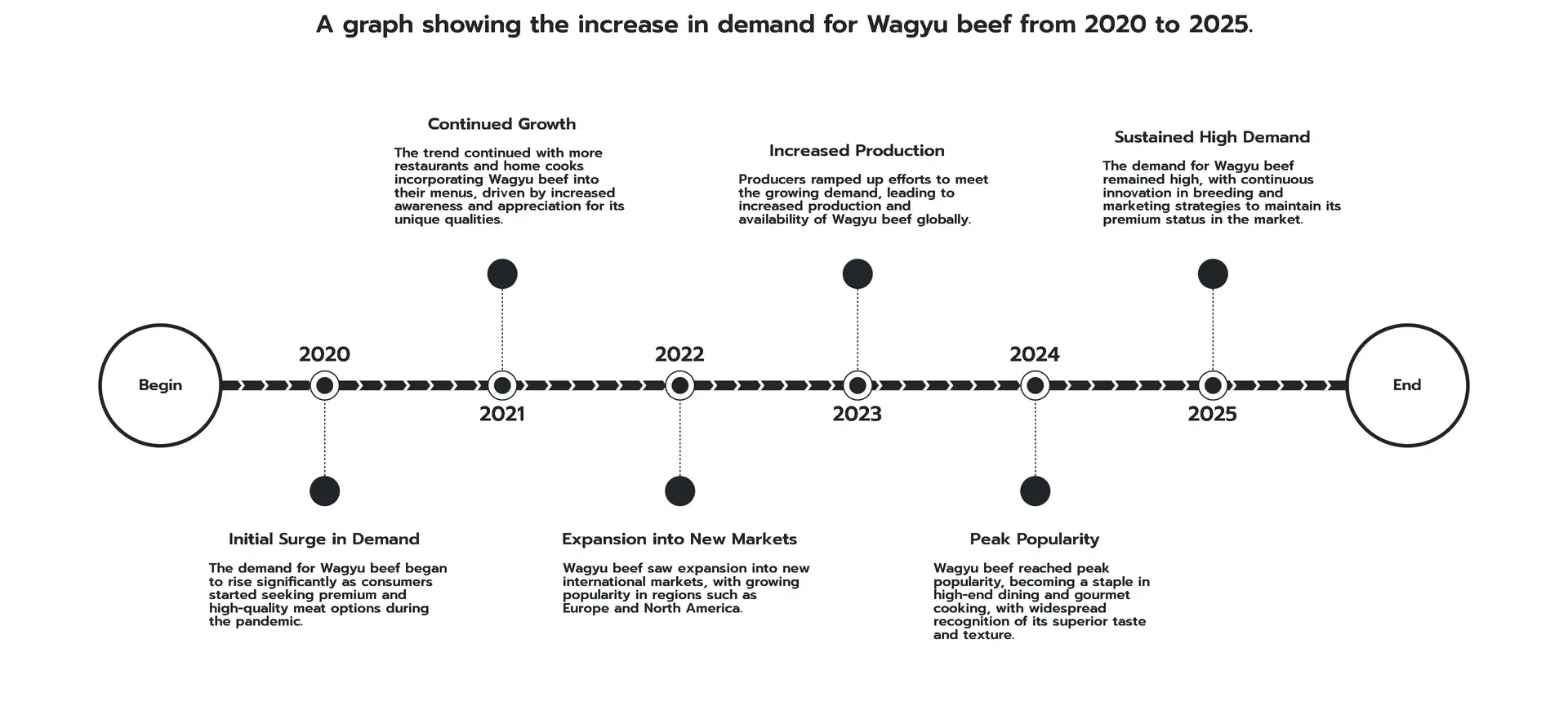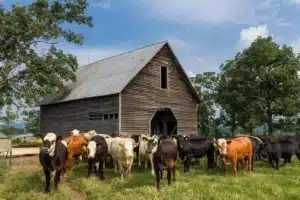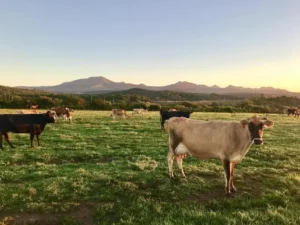How to Invest in Wagyu Cattle? Is it Profitable in 2024

Wagyu cattle farming is a profession and a business. The cattle are raised to provide some of the best beef in the world to a market of customers. Wagyu beef from Japan can really cost up to $200 a pound, and the American market is only growing. If there was ever a question about whether or not these prized cattle can be raised in a way that makes money, it is now. Many faithful know the answer. Wagyu has become more popular among buyers as a way to protect their money, and it often pays off.
Let’s get right to the point: Is it smart to invest in Wagyu cattle? It’s possible, yes! But, like any business, it comes with some risks and benefits that are meant to make the most money possible. The most important thing is to know how to take care of these animals and sell their highly prized, fatty meat to a specific market. You will learn everything you need to know about this blog post, from the basics to real-life people who have made a lot of money in this field.
The Demand for Wagyu Beef
It’s not the same as the beef or steak you can buy at the food store or shop. Wagyu meat is special. Restaurants and upscale customers all over the world love this unique distribution of fat, softness, and rich flavor. The high demand for Wagyu cattle has kept their prices high, making sure that the beef is only served to the wealthy. From the other side of the business fence, what does this really mean?
It found that the market for beef is still growing and that the market for more expensive Wagyu is also growing. Market research shows that the Wagyu beef market will grow at a compound annual growth rate (CAGR) of 6.5% from 2020 to 2025. It’s not just about beef; this is a product that smart people want to buy, and you’ll see it more and more in Japan, the U.S., Australia, and Europe. It could also mean getting into the market for high-end Wagyu beef, but that could cost something, both in money and in other ways.
The Path to Profitability: Real-Life Examples

One place it was done was at Hall Farmstead in Kentucky. They started raising Japanese-American Wagyu cattle and started feeding them the way it was supposed to be fed: grass-fed and grain-finished. This gives Wagyu meat the marbling that most people know it for. By spending money on better feed and free-range practices, they were able to sell their meat at a higher price, giving them an edge in the market. In just five years, they went from selling a few heads of cattle to having what could be called a very profitable business. This shows that growth is possible if you plan it well.
Or, like with companies that are growing, like Snake River Farms, the American Wagyu giant. They take their time breeding and do DNA tests on their animals to make sure they produce the best animals. A single steak costs $150. So, by focusing on the best gen famitsubo and selling their Wagyu beef as a luxury item, they have turned what many people would see as an unusual agricultural practice into a very successful business.
The Investment Breakdown: What Does It Take?
You can’t just put money into a few Wagyu cows and wait for the money to come in. It takes a lot of money to get started because of all the costs involved. The return on investment depends on things like feed, health care, and farm management. A good Wagyu cow can cost anywhere from $4,000 to $30,000, based on its lineage and the amount of marbling in its meat.
This method also costs a lot of money and is not the right way to raise wagyu cattle. Wagyu cows, unlike other meat cattle, ate grains to get that marbled look. Feed costs aren’t really small, since the finest grain mixes can be more expensive than regular cow feed. The extra costs are canceled out, though, by the fact that the beef can be sold for a lot more than the usual price of two or three times as much.

Problem: Not Just Any Farmer Can Raise Wagyu
Now here’s the challenge: When it comes to cattle, Wagyu are not the same as regular beef cattle. To get the best streaks and softness in the cut, the animals need to be handled gently, fed a certain way, and given pressure. Ag freshmen, this stress changes the marbling in the meat, and THAT changes the price of your beef. To make sure the cattle gain enough weight and produce good beef, some farms go the extra mile and mix steam-dried corn, soybeans, and other grains.
On top of that, Wagyu cattle took longer to develop than other cattle. Instead of being raised until they are about thirty months old like other beef types, Wagyu cattle should be raised until they have the most marbling and value. You may remember that this takes longer and costs more, but if you do it right, the profits are much higher.
Solution: Specialized Care and Knowledge Pay Off
The answer to these problems? Pay attention to the level of care. If you feed Wagyu cattle high-quality feed, like grass, or high-quality grade feed, they are known to produce excellent meat that costs a lot. Make sure that the cattle get fresh water from a stream and that the feed is carefully watched over. Also, try to keep the animals as stress-free as possible.
This is why buying Wagyu isn’t just buying cattle; it’s an investment that requires the buyer to understand the many things that make this beef unique. Cattle can be a good or bad investment depending on whether you get good genetics, work with good food experts, and keep track of what they eat.
Agitation: What Happens If You Don't Get It Right?
So, the ways these cattle are raised should produce high-quality meat that makes the high prices of the cattle worth it. If you take away the white fat and smooth texture, it’s just like any other beef. And in a setting where marbling scores show the difference between success and failure, this cuts into your returns. It’s even worse if you give your customers and viewers poor quality. You can hurt your business before it even starts.
The Bottom Line: Is It Worth It?
Thus, is the Wagyu cattle farming business profitable? Oh definitely, but it is not for the little heart. To succeed in this industry an individual needs capital, skills to care for cattle, and the willingness to produce quality beef. On a more positive note, I have found that where people are willing to invest time, energy, and effort into doing things correctly the rewards can be huge. Since consumers around the world seek high-quality beef and are particularly willing to pay a lot of money for Wagyu beef cattle, it means that the demand for Wagyu cattle will continue on the rise; this will be good news for investors.


